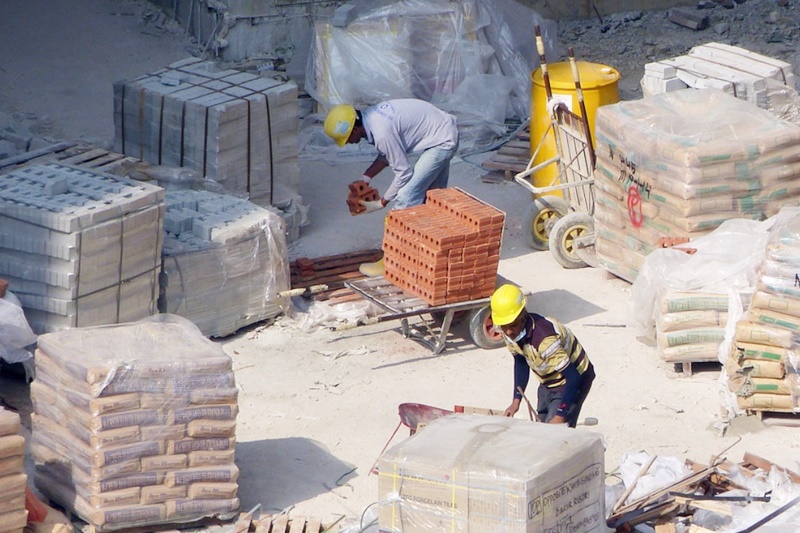Proper handling and storage of construction materials is important for any construction project. Why?
In a construction site, most of the material handling are lifting, lowering, pushing, pulling, carrying, or holding an object. The risk factors associated with material handling and safe lifting include awkward postures, repetitive motions, forceful exertions, pressure points, and static postures. Repeated or continuous exposure to one or more of these factors can initially lead to fatigue, discomfort, and over time, more severe injuries in the back, shoulders, and other parts of the body can occur. In this article, we’ll discuss several ways to reduce risk factors and properly handle and store materials.

Tips for Proper Handling and Storage of Construction Materials
Construction works often require moving materials around the site that involves pushing, pulling, and lifting. The construction materials are heavy and awkward, so you should pay special attention to moving them by hand or with the help of a crane. Material handling starts with the safe storage of items on the job site.
- When choosing a storage area, think about how you will move the material with a crane; you will need a good space for moving the material with a crane, or if you are going to move it manually, make sure you can get through it without hurting your back.
- Ensure stored material does not block access to or from an exit like the stairs and the front door.
- Make sure that the storage areas are kept organized and clean, so nobody trips on materials.
- Make sure you secure all storage keep this thing in mind do not exceed maximum safe load limits.
- Keep Aisles and passageways clear.
- By stepping back the layers and cross-keying, you can stack bagged materials
- Do not store more materials than you need on scaffolds or runways.
- Do not stack bricks higher than 7 feet in height.
- Do not stack Masonry block higher than 6 feet high.
- Do not stack lumber piles higher than 20 ft mechanically or 16 ft manually. Manually lifting heavy items is one of the causes of injuries in the workplace.
- Seek help lifting heavy loads
- Avoid awkward postures
- Avoid holding items for an extended period
- Beware of weather conditions as cold temperatures can cause a decrease in muscle flexibility, while high temperatures can lead to dehydration.
- When carrying material across the job site, ensure you see where you are going and take the most straightforward path. Keep an eye on where you are going.
- One of the best ways to avoid injury is to know the correct way of safe lifting: squat down bending on the knees, not bend on to your waist, get a firm grasp on the object, slowly began straightening your legs do not twist your body doing this and keep the thing as close to the body,
- Use ramps or lift gates to load machinery into trucks.
- Order supplies in smaller quantities and breaks downloads off-site.
- Rotate tasks, so employees are not exposed to the same activity for too long.
- Store heavier containers so they can be handled safely.
- Utilize proper handholds, including handles slots or holes.
- Always wear proper personal protective equipment to avoid finger injuries.
- Change your work routine often.
- Take regular breaks and break tasks into the shorter segment.
- When using mechanical equipment to move and store materials, you should avoid overloading equipment. All materials handling machines have the capacity that determines the weight which they can handle.
Conclusion:
In a Nutshell, most injuries that happen as a result of material handling and storage can be prevented following the safe practices which we have mentioned above in the article. With good planning and awareness of potential dangers, your job site can be secure and injury-free.
We hope these tips for handling and storage of construction materials will help you to prevent some of the safety issues.

 by
by 

